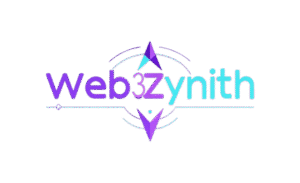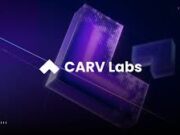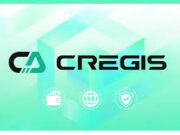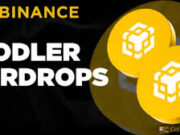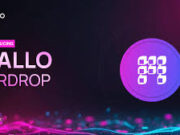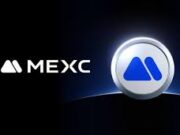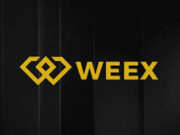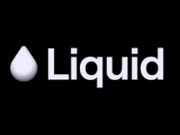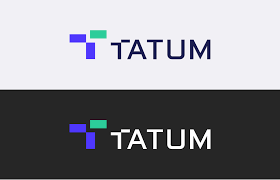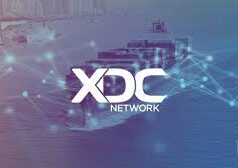In the fast-moving world of blockchain development, one constant challenge has been managing nodes. For many developers, running independent nodes for different blockchains quickly turns into a nightmare. The process is not only expensive but also time-consuming and unreliable. Because of these issues, developers often seek solutions that simplify the integration of multiple blockchain networks. This is exactly where Tatum.io has proven to be a game-changer. By abstracting away the infrastructure complexity, Tatum allows developers to focus on building, not maintaining.
Now, Tatum has taken a massive step forward by introducing full RPC access for the TRON blockchain. This upgrade is more than a technical tweak; it is a breakthrough that brings together real-time notifications, indexed data, and enhanced wallet operations. For developers working on TRON-based applications, this update could mark the start of a new era.
According to Tatum’s official documentation, the platform already supports more than 100 blockchain protocols, but TRON’s addition with full RPC coverage means the experience is now on par with Ethereum and Bitcoin (Tatum.io).
Why TRON Matters in Today’s Blockchain Ecosystem
Before diving into the specifics of RPC access, it is important to understand why TRON is such a big deal. Over the past few years, TRON has emerged as one of the fastest-growing blockchain networks. Known for its high-speed transactions and minimal fees, TRON has attracted developers building DeFi applications, NFT marketplaces, and large-scale dApps (Cointelegraph).
Currently, TRON processes millions of transactions daily and supports over 200 million user accounts. Its delegated proof-of-stake (DPoS) consensus mechanism enables blocks to be created every three seconds, making it a natural choice for high-throughput projects (TRON DAO). However, until recently, developers had to rely on unreliable public nodes or pay high costs for premium node services. Tatum’s upgrade eliminates these pain points by offering comprehensive, production-ready RPC endpoints for TRON.
What Exactly Is Full RPC Access?
In blockchain development, Remote Procedure Call (RPC) is the mechanism through which applications communicate with blockchain networks. Essentially, it acts as the bridge between your dApp and the blockchain. With Tatum’s latest upgrade, developers can now interact with TRON using familiar methods like eth_getBalance or eth_call, in addition to TRON-specific methods such as getBlock or broadcastTransaction (Tatum Docs).
The key advantages of Tatum’s RPC for TRON include:
- High reliability: Optimized nodes capable of handling thousands of requests per second.
- Low latency: Quick responses, essential for real-time applications.
- Archive node support: Easy access to historical blockchain data for analytics or audits.
- Mainnet and testnet compatibility: Seamless development and deployment environments.
By offering Ethereum-style JSON-RPC compatibility, Tatum also simplifies the process for developers porting EVM-based code to TRON (GitHub – Tatum.js).
Real-Time Notifications: Game-Changer for Developers
While RPC access is crucial, real-time notifications make the real difference in user experience. Instead of polling the blockchain endlessly, developers can now subscribe to live updates. Tatum’s system delivers event-driven notifications via webhooks, allowing instant reactions to on-chain events.
For example, developers can:
- Track TRC-20 token transfers.
- Monitor wallet balance changes.
- Capture contract-specific events in real-time.
This is particularly powerful for DeFi dashboards, gaming applications, and content platforms where instant updates define user satisfaction. Tatum’s indexed blockchain data ensures structured results, avoiding the hassle of sifting through raw logs (Tatum Docs).
Supercharged Wallet Operations
Another major improvement lies in Tatum’s wallet management system. With this upgrade, developers can securely create, sign, and broadcast TRON transactions. Importantly, Tatum ensures that private keys never touch production environments, thanks to its secure virtual account system.
Developers can now:
- Generate TRON addresses and mnemonics.
- Transfer TRX or stablecoins like USDT with ease.
- Estimate energy fees before executing contracts (Tatum Docs – EstimateEnergy).
- Deploy TRC-10 and TRC-20 tokens using just a few lines of JavaScript or TypeScript.
Because TRON’s bandwidth and energy models differ from Ethereum’s gas system, this added layer of abstraction saves developers from unexpected costs while making apps more efficient.
Why Developers Should Adopt Tatum’s TRON Integration
The benefits extend beyond simplicity and speed. Running a dedicated TRON node can easily exceed $500 per month, not counting the overhead of infrastructure management. Tatum provides a cost-effective solution with a free tier for testing and scalable enterprise options. This makes it accessible to both indie developers and large organizations (Tatum.io).
Moreover, as TRON’s total value locked (TVL) recently surpassed $8 billion across DeFi platforms, the opportunities for developers are enormous (DefiLlama). By leveraging Tatum’s infrastructure, even small teams can compete at enterprise levels without worrying about reliability or downtime.
Challenges and Pro Tips for Integration
Despite its many benefits, developers should remain mindful of certain factors:
- Rate limits: Free tiers may not suffice for high-volume applications. Paid upgrades solve this.
- EVM limitations: TRON is not fully EVM-compatible, so some Ethereum-based libraries may require small adjustments.
- Security best practices: Always use Tatum’s virtual accounts rather than embedding private keys directly in code.
Getting started is straightforward. Developers can install the Tatum.js SDK from GitHub, authenticate with an API key, and call methods like rpc.tron.getBalance(address) in just a few lines of code. Combined with webhooks, this creates a robust monitoring and interaction setup.
Looking at the Bigger Picture
In the fragmented Web3 space, developers often face the burden of juggling multiple blockchains. With Tatum’s full RPC access, real-time event notifications, and wallet management features for TRON, developers can now build faster and smarter. This upgrade not only enhances TRON’s ecosystem but also reinforces Tatum’s mission of simplifying blockchain adoption across industries.
As TRON continues to grow in entertainment, social media, and finance, this integration ensures that developers—whether indie builders or enterprise teams—can innovate without infrastructure bottlenecks.
For developers eager to test the waters, signing up with Tatum could be the first step toward building the next viral Web3 application.
Sources:
- Tatum.io. (n.d.). Fast, Reliable, Affordable TRON RPC Nodes and Developer Tools.
- Tatum Docs. (n.d.). TRON access via Ethereum JSON-RPC API.
- Tatum Docs. (n.d.). TRON RPC Documentation.
- Tatum Docs. (n.d.). Wallet Provider TRON.
- Tatum Docs. (n.d.). EstimateEnergy RPC.
- GitHub. (n.d.). tatumio/tatum-js.
- Cointelegraph. (2025). TRON blockchain news.
- TRON DAO. (2025). TRON Network Overview.
- DefiLlama. (2025). TRON DeFi TVL.
